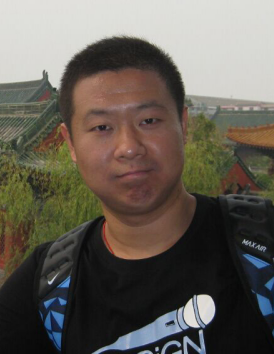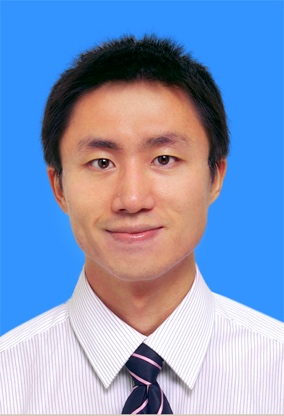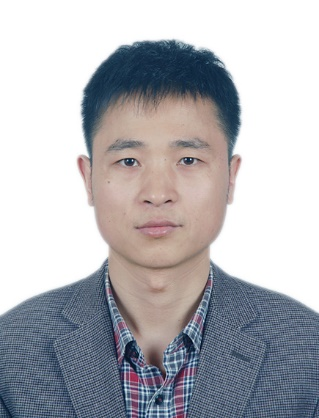
Speaker

Prof. Leng Lu
Nanchang Hangkong University
Brief introduction:
Currently, he is a full professor, the dean of the Institute of Computer Vision, and the office director of the Key Laboratory of Jiangxi Province for Image Processing and Pattern Recognition at Nanchang Hangkong University.Prof. Leng has published more than 100 international journal and conference papers, including more than 70 SCI papers and three highly cited papers. He has been granted several scholarships and funding projects, including five projects supported by the National Natural Science Foundation of China (NSFC). He serves as a reviewer of more than 100 international journals and conferences. His research interests include computer vision, biometric template protection, and biometric recognition.Prof. Leng is an outstanding representative of "Innovation Talent" of Jiangxi Enterprise in "Science and Technology China", received the "Jiangxi Youth May Fourth Medal", "Jiangxi Hundred-Thousand-Ten-thousand Talent Project", "Jiangxi Voyage Project", etc.
Speech Title: Credible Identity Authentication in Cyberspace
Speech Abstract:Identity authentication methods can be briefly categorized into three types, namely possession (e.g. ID card), knowledge (e.g. password) and biometric (e.g. face, fingerprint, palmprint). Possession and knowledge have some inherent deficiencies. Biometric recognition is convenient, but biometric systems typically suffer from many serious security and privacy problems. This keynote speech will introduce credible multi-factor (knowledge+biometric, possession+knowledge, possession+knowledge+biometric) identification authentication, which is promising and will become popular in future.

Prof. Zhonghong Ou
Beijing University Of Posts and Telecommunications
Brief introduction:
Ou Zhonghong, professor and doctoral supervisor of the School of Computer Science (National Model Software Institute), Deputy Director of Personnel Department, Director of Talent Office, 1551 Talent, Young Scientist of the National Key R&D Program, Beijing Young Teaching Master. He used to be the vice president of the School of Computer Science (National Demonstration School of Software), and now he is the director of the Computer Special Committee of the Virtual Simulation Experiment Teaching Innovation Alliance, the deputy director of the Education Innovation and Production and Education Integration Special Committee of the National College Computer Basic Education Research Association, and the deputy leader of the TC11 VR/AR Sub-working Group of the China Communications Standardization Association. Standing member of the Intelligent Service Committee of the China Artificial Intelligence Society, member of the Big Data/Computer Vision/Education Committee of CCF, Young Expert of the Internet Society of China, senior member of CCF. He has also published more than 80 high-level papers in IEEE TMC, TMM, TCC, ACM Senses, etc. His research results have been reported by BBC News, ACM Tech News, The Register and other well-known international media. His research interests include few-shot learning, cross-domain adaptation, and small object detection.
Speech Title: Graph Learning for Personalised Recommendations
Speech Abstract:Personalised recommendations play a crucial role in enhancing user experience on various online platforms. Traditional recommender systems usually rely on user-item interaction and collaborative filtering techniques, which have limitations in capturing the complex dependencies and dynamics of user preferences. In recent years, with their advantages in handling non-Euclidean spatial data, graph learning methods have been widely applied. In recommender systems, graph learning can leverage the rich structural information in behavioural graphs to effectively learn complex user preferences. In this talk, we will first provide a comprehensive review of graph learning techniques for personalised recommendation, and then introduce cutting-edge GNN schemes, including fine-grained interactive graph neural networks for session recommendation and heterogeneous graph neural networks for news recommendation. Finally, we outline several research challenges and potential directions for future developments in graph learning for personalised recommendations.

Prof. Tao Lei
Shaanxi University of Science and Technology
Brief introduction:
Tao Lei, a third-level professor and doctoral supervisor at Shaanxi University of Science and Technology, serves as a member of the Academic Committee of the University, Vice Dean of the School of Electronic Information and Artificial Intelligence, and a senior member of IEEE/CCF/CSIG. He is selected as a high-level talent in Shaanxi Province, a Shaanxi Province Distinguished Youth, listed among the top 2% of global scientists by Stanford, and recognized as a highly contributing author by Wiley China Open Science. He serves as associate editor, editorial board member, and guest editor for seven journals, and has held positions such as general chair, technical committee chair, publicity chair, awards committee chair, and session chair at more than 20 international conferences. His primary research interests lie in computer vision, machine learning, etc. He has authored or co-authored four monographs and conference proceedings, with over 100 papers published in prestigious domestic and international journals and conferences such as IEEE TIP, IEEE TMI, IEEE TFS, IEEE TGRS, and IJCAI. Among them, six papers are highly cited according to ESI, with over 4300 citations on Google Scholar. He has led projects funded by the National Natural Science Foundation of China (5 projects), Shaanxi Province Outstanding Youth Fund, Shaanxi Province Key R&D Program, etc. He has been awarded the second prize for Scientific and Technological Progress in Shaanxi Province and the first prize for outstanding research achievements in higher education institutions in Gansu Province as the first author.
Speech Title: Spatial-spectral Feature collaboration for VHR Remote Sensing Image Change Detection
Speech Abstract: Remote sensing image change detection utilizes multi temporal remote sensing data to extract change information from images, and then quantitatively analyzes and monitors the characteristics and processes of surface changes. Remote sensing image change detection can be widely applied in fields such as land use, urban planning, disaster assessment, and crop growth monitoring. Currently, remote sensing image change detection faces problems such as low detection accuracy in complex scenes, a large mountain of model parameters, and limited annotated data. To address these issues, we propose some novel methods used for remote sensing image change detection under complex scenes. The proposed methods not only achieve higher change detection accuracy than mainstream methods, but also has fewer parameters and lower computational complexity, or only depends on a small amount of annotated data.